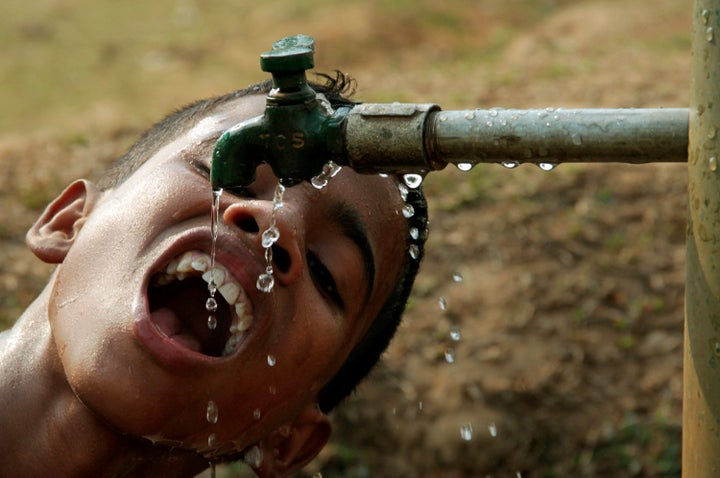
Apparently it takes three liters of water to produce one liter of sparkling water. So said Alex Prud'homme, author of The Ripple Effect, at a World Water Day event I attended this week. In fact it was the third of four water events I attended. And Prud'homme's comment was the most retweeted of all my live tweets from the events.
For those of you who haven't spent this week immersed in water (oh, the wit), here are some salient points (or at least the ones that interested me) from the experts I've heard over the past few days:
Unless we're one of the (mostly) women and girls who spend 200 million hours a year fetching it from wells or rivers, we have no particular incentives to ration water -- and it's running out. We flush our toilets with drinking water. The world is eating more and more meat, which takes surprisingly massive amounts of water to produce. We frolic in garden sprinklers. Half the population's staple diet is rice, grown by flooding. And since water is essential to life, most people are emotionally resistant to being told to limit their water use or pay for it.
I was quite surprised to hear that over 70% of the water we use worldwide is for farming. And with no financial incentives to save it, many agriculture choices fly in the face of water frugality. Yemen (perhaps the country in the world at the biggest risk of running out of water) uses almost half of the country's fresh water to grow khat. Saudi Arabia, another country with limited water, has one of the world's biggest dairy farms -- and according to the experts this week, it takes over 2,300 liters of water to produce one liter of milk. I know I like my milky cereal in the morning, but that's a lot of water.
Apparently technology and innovation isn't keeping up with demand for better water management. This might have something to do with the fact that only 6% of farmers -- in the U.S., at least -- are under the age of 35. Plus, there are other limitations on innovating for better farming water management, like policies that inhibit 'nimbleness' and the need to balance water management for farming with water management for conservation, producing enough food while safeguarding endangered species. It's a tricky business.
On World Water Day, Secretary Clinton touched on the importance of water security in health. She described the importance of water in preventing malnutrition, the health risks of floods, contaminated water and even the use of water in enabling good hand hygiene to stop the spread of diseases. She officially established water as a foreign policy and security priority. I'd suggest it's also a priority in global health diplomacy.
Farmers are using new irrigation techniques, different crops, and all sorts of measures to ensure there's enough water to produce enough food for us now, and in the future -- apparently we'll need an estimated 25% more food in the next few decades, using less water to grow it. But the drive to reduce our personal 'water footprint' hasn't yet embedded in the cultural zeitgeist. As a population, I'm told we would rather someone built a big dam than install devices to reduce our own water use. Apparently not a viable long term solution...
I suspect it's the fact that water management is so abstract that makes it so tricky to grab our collective imagination. The experts can tell me it takes 15,000 liters of water to produce 1kg of beef (and they do) -- but I have no vision of how much water that is, or the magnitude of the problem. On the other hand, though the impact is clearly lower, we can all actually imagine the three liters of water that are used to produce one liter of sparkling water. Which is probably why so many people shared this on Twitter.
That's all very well, but we still lack both facts and perspective. I don't know how many liters of water it takes to produce a liter of still water. Or tap water. Or orange juice. Or soda. I wonder how much water it takes to make my chocolate bar (I really hope it's not very much). And what does it all mean? In this era of informed decision making and rising water security challenges, I suspect we're all about to hear a lot more about our 'water footprint'...
